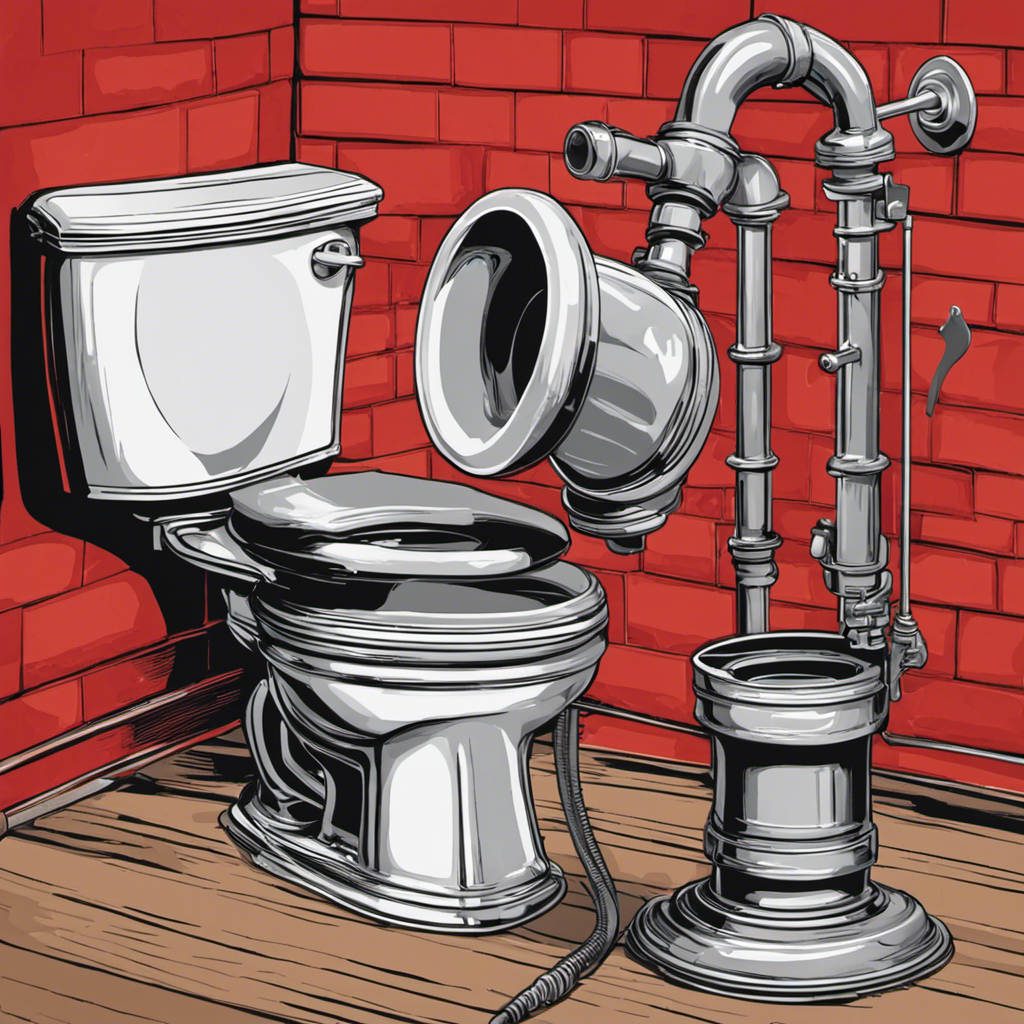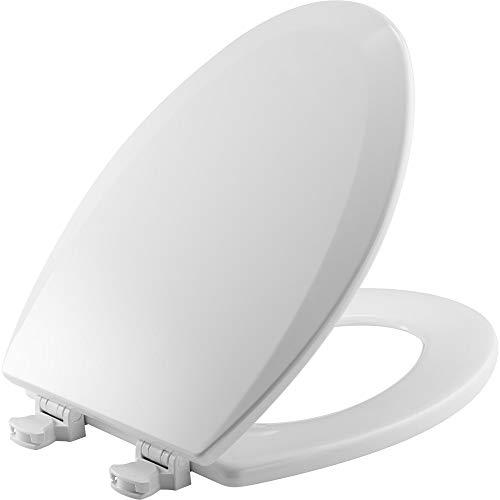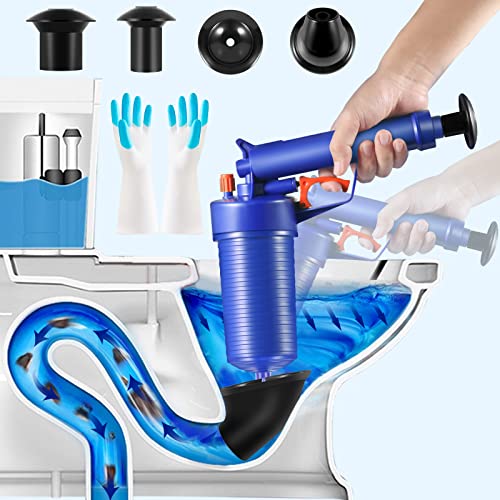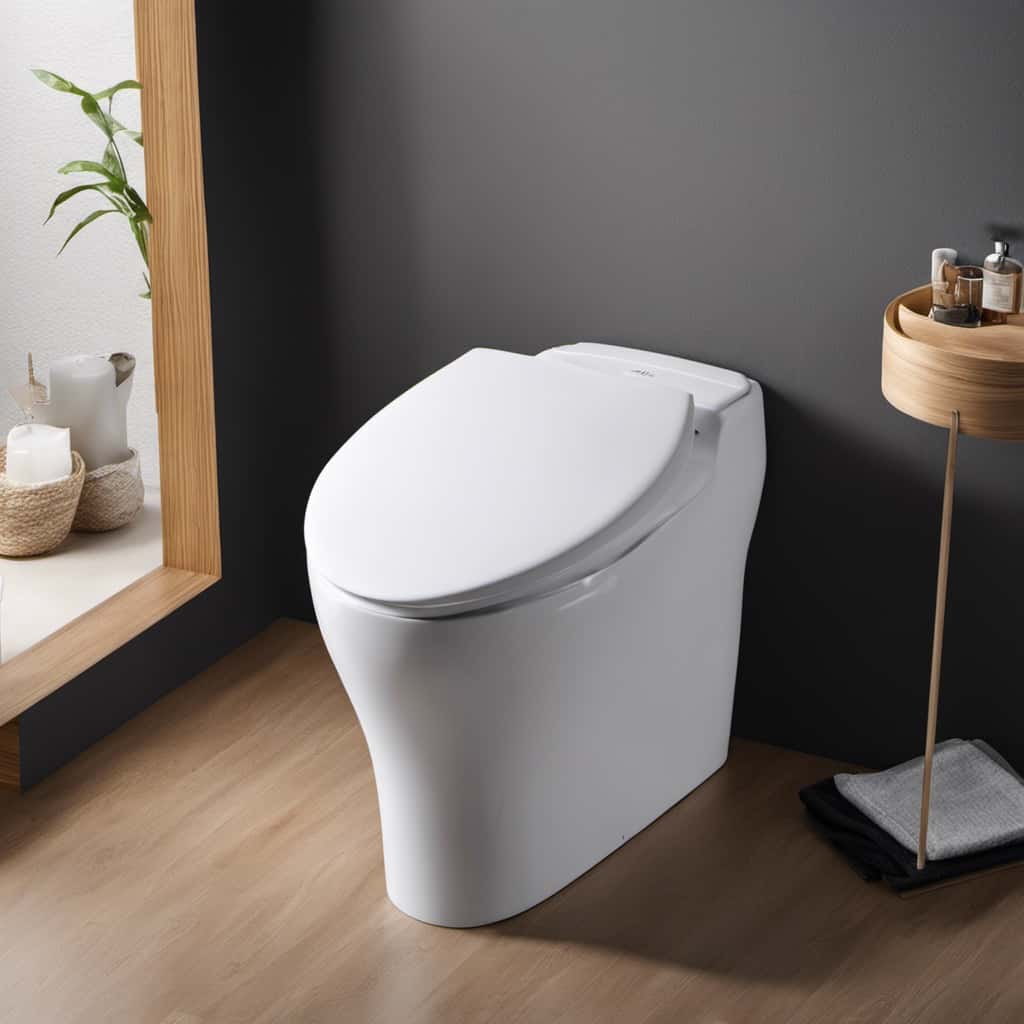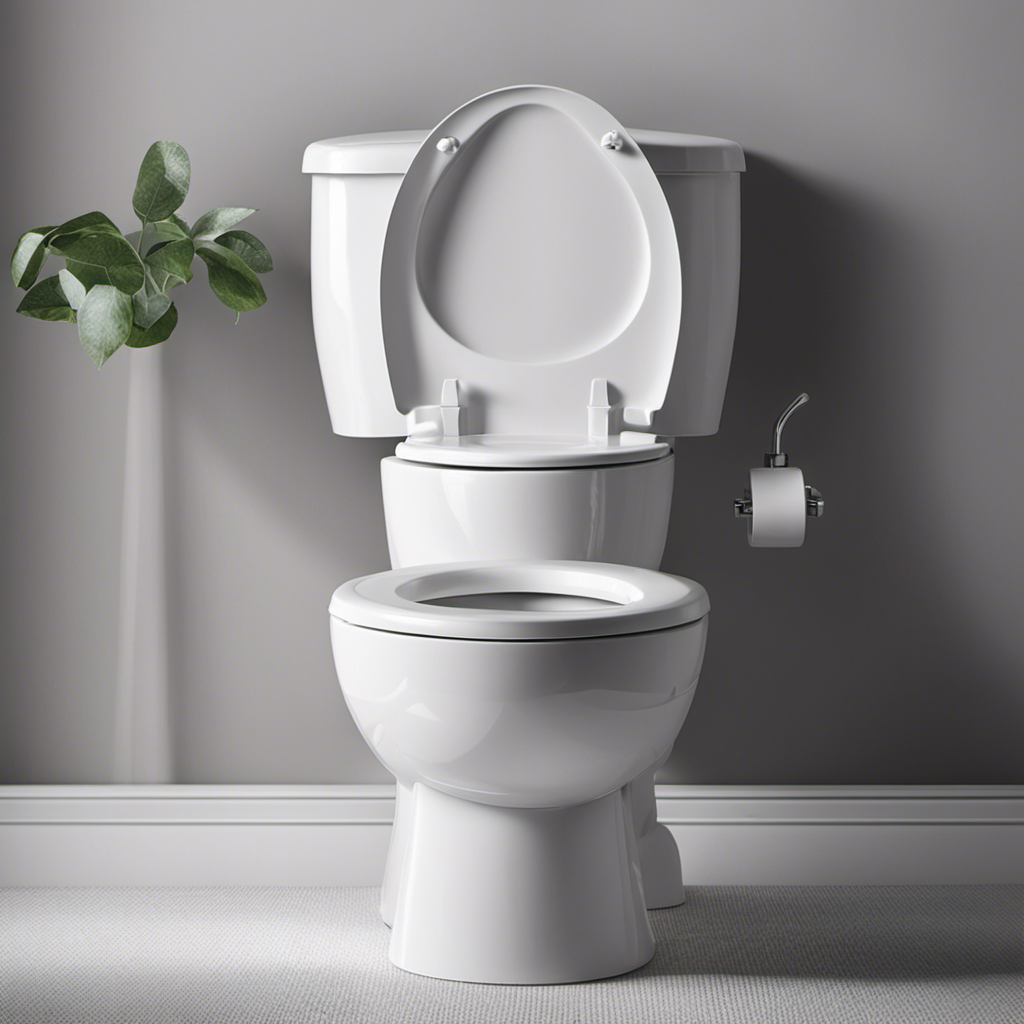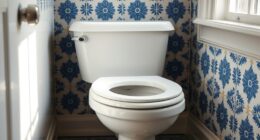As someone who has dealt with their fair share of stubborn toilet clogs, I can confidently say that finding effective methods to unclog toilets is crucial.
In this article, I’ll share my pro tips and tricks for tackling those pesky clogs.
From using a plunger or plumbing snake to DIY drain cleaners and store-bought enzymes, I’ll cover it all.
Get ready to learn the ins and outs of toilet unclogging and say goodbye to frustrating clogs once and for all.
Key Takeaways
- Plungers and plumbing snakes are effective tools for unclogging toilets.
- Homemade methods such as using baking soda and vinegar or dish soap and boiling water can also be effective.
- Preventive measures such as avoiding flushing inappropriate items and regularly maintaining the toilet can help prevent clogs.
- If all else fails, it may be necessary to seek professional assistance to unclog the toilet.
Effective Unclogging Methods
One effective unclogging method that I can try is using a plunger fully submerged in water to cover the whole hole. This method requires a high-quality plunger, which is an essential tool for unclogging toilets.
By creating a tight seal and applying vigorous push and pull motions, the plunger helps to dislodge the clog and restore the normal flow of water. It is important to ensure that the plunger is fully submerged in water to increase the effectiveness of the suction.
However, if this method does not work or the clog persists, it may be necessary to seek professional plumbing services. Professional plumbers have the expertise and specialized tools to handle more stubborn or complex clogs, ensuring a thorough and efficient solution to the problem.
Homemade Solutions for Toilet Clogs
I find that using a mixture of baking soda and vinegar can be an effective homemade solution for unclogging a toilet. Here are some natural remedies and DIY toilet clog solutions that you can try:
-
Baking Soda and Vinegar Method: Mix two cups of water and one cup of baking soda, pour into the toilet bowl, add two cups of vinegar, let it rest, and flush after 6-8 hours.
-
Dish Soap and Boiling Water Method: Warm a few liters of water, cut pieces of dish soap, pour into the toilet bowl, wait a few minutes, and flush.
-
Wire Coat Hanger Method: Cover one end of a wire hanger with an old towel, insert into the toilet bowl, push and twist down the drain until water starts to drain again.
-
Plunger or Suction Cup Method: Purchase a plunger with a long handle, place the cup into the bowl, press firmly to create suction, and repeat as necessary.
These homemade solutions can be a cost-effective and environmentally-friendly alternative to store-bought drain cleaners. Give them a try before resorting to more drastic measures.
Preventive Measures for Avoiding Toilet Clogs
Regularly maintaining your toilet is essential to prevent clogs from occurring. It is important to educate children about proper toilet usage to avoid any potential issues.
One way to do this is by teaching them what should and shouldn’t be flushed down the toilet. Creating a list of approved items can help children understand what is appropriate to dispose of in the toilet.
Another preventive measure is to double-flush, especially when using large amounts of toilet paper. This ensures that everything is properly flushed down the drain.
Additionally, clearing the toilet surface before flushing can help prevent any blockages.
Common Causes of Toilet Clogs
Flushing excessive amounts of toilet paper can often lead to toilet clogs. Identifying signs of a clogged toilet is essential for toilet clog prevention. Here are some common causes of toilet clogs:
- Flushing feminine hygiene products: These products are not designed to break down easily and can cause blockages in the pipes.
- Flushing baby wipes: Although they may be labeled as flushable, baby wipes do not disintegrate as quickly as toilet paper and can contribute to clogs.
- Flushing cotton balls or swabs: These items are not meant to be flushed and can accumulate in the pipes, leading to blockages.
- Flushing hair or dental floss: Hair and dental floss can wrap around other debris in the pipes, creating a stubborn clog.
Additional Tips and Warnings for Unclogging Toilets
Using the proper plunging techniques can effectively clear a clogged toilet. However, if all methods fail, it may be necessary to perform a root cause analysis and seek professional assistance.
Tracing the growth of roots is crucial as tree roots can cause clogs in sewer lines. Trees near the house can reach and penetrate pipes, leading to blockages. While tree-related clogs are not very common, it is essential to investigate if other solutions fail.
It is advisable to avoid strong chemical drain cleaners as they can cause corrosion in pipes, making them prone to clogs. Instead, consider using homemade toilet cleaner recipes and practice regular toilet maintenance.
If frequent clogs persist, it is important to look into the root cause and implement preventive measures to avoid future clogs. Seeking professional help can provide expert guidance and solutions.
Frequently Asked Questions
Can I Use a Plunger to Unclog a Toilet With a Weak Flush?
Yes, you can use a plunger to unclog a toilet with a weak flush. If the plunger doesn’t work, you can try alternative methods like using a plumbing snake or consider hiring professional unclogging services.
Are There Any Homemade Solutions That Can Dissolve Mineral Deposits in the Toilet?
Yes, there are homemade solutions for unclogging toilets and removing mineral deposits. One method is using a mixture of vinegar and baking soda. Pour the mixture into the toilet bowl, let it sit, and then flush.
How Can I Prevent My Toilet From Clogging if I Have a Large Family That Uses It Frequently?
To prevent toilet clogs in a large family, follow these toilet maintenance tips: double-flush more often, clear the surface before flushing, and regularly maintain the toilet. These practices can help reduce clogs.
Can Using Chemical Drain Cleaners Damage My Toilet’s Plumbing System?
Using chemical drain cleaners can damage your toilet’s plumbing system. Instead, consider alternative methods like homemade solutions or professional plumbing services to safely and effectively unclog your toilet without causing harm.
What Should I Do if None of the Unclogging Methods Mentioned in the Article Work for My Toilet?
If the unclogging methods mentioned in the article don’t work for my toilet, I may need to explore alternative solutions or consider hiring a professional plumber for assistance.
Conclusion
In conclusion, unclogging a toilet can be a daunting task, but with the right methods and preventive measures, it can be easily managed.
From using a plunger or plumbing snake to homemade solutions like baking soda and vinegar, there are various options to choose from.
Remember to avoid flushing inappropriate items and regularly maintain your toilet to prevent clogs.
Just like a well-oiled machine, a properly functioning toilet ensures smooth sailing in your daily routine.
So, don’t let your toilet become a tangled web of troubles, tackle those clogs head-on and keep things flowing smoothly.
